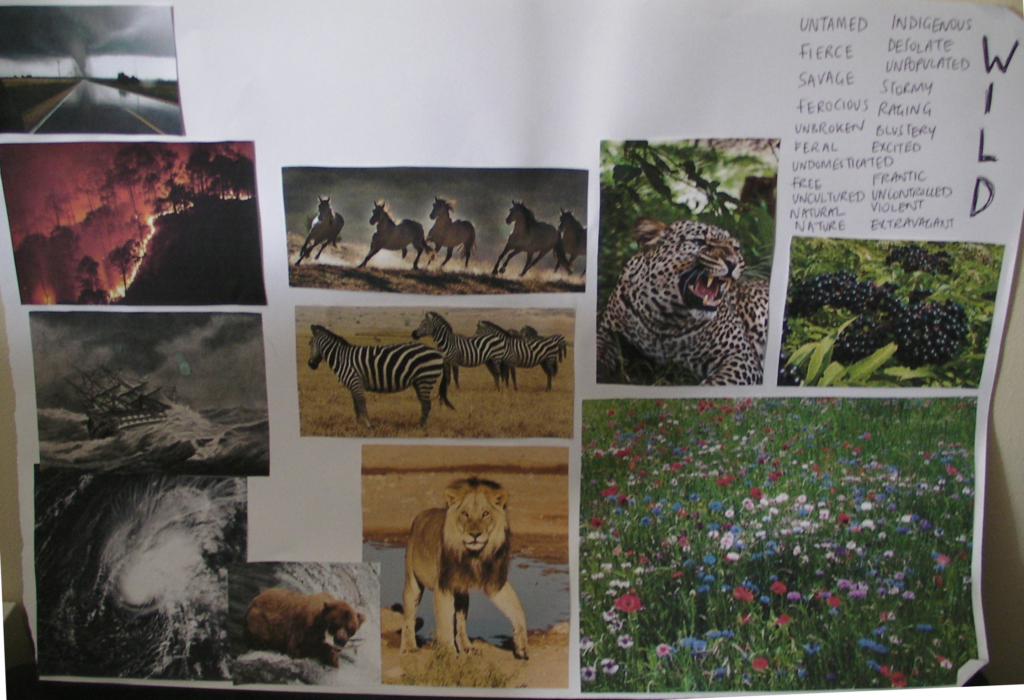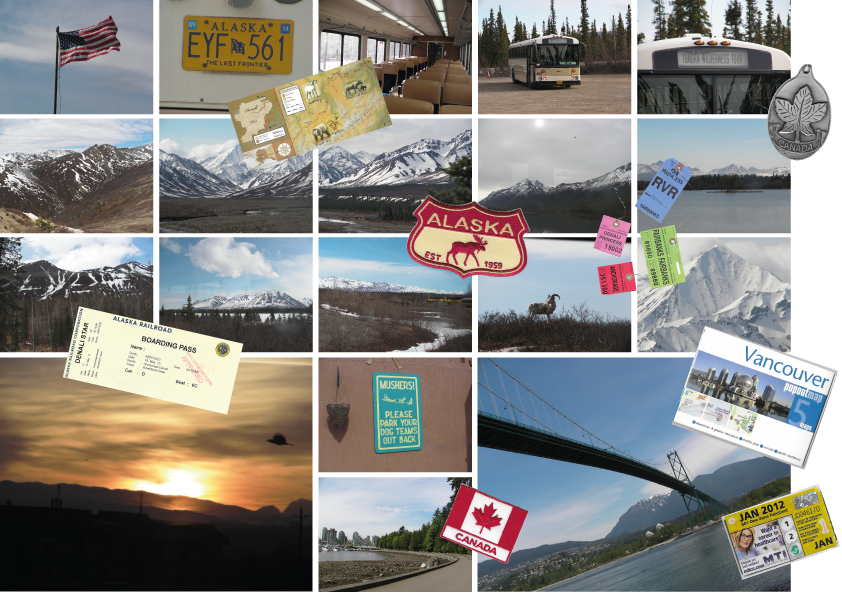Brief
Choose one of the words from the previous exercise and on a large sheet begin expanding on the themes and ideas that you identified.
Collect swatches of colour and texture or create your own to establish a palette of colours and repertoire of marks. Google the word and either print off or draw from some of the images that emerge. Go through other books and magazines and take snippets of images, which have associations with yiour words and theme. Assemble these elements on your large sheet.
You are not creating a piece that is a designed artefact in its own right. You don’t have to include words but may want to selectively incorporate some words into your moodboard as an aide-memoire. If you organise your content according to visual connections your may find that links and some nice surprises emerge. This should lead to you being able to recognise or establish a hierarchy within your content.
I attempted this exercise for the first time using the word ‘Wild’. I searched the internet for some images that I thought would be relevant. I then thought of some words that I associated with the word.
I thought this was a really poor attempt at making a moodboard, but I honestly found it really hard to make anything better or that would stimulate creativity for me.
I then repeated the exercise using the word ‘Travel’. I used some materials from a trip I took to Canada and Alaska in 2012 as I thought making the moodboard more personal to me would stimulate my creativity.
I found this exercise really difficult, which I thought I would before I even started it (probably not the best mindset to go into it with!). I just could not think how to associate colour and/or texture with travel and did not feel that I could make any sort of visual connections from my moodboard.
When I looked at good examples of other people’s moodboards I still could not see how they would be something I could benefit from. Currently, I do not feel the making a moodboard is helpful for me in terms of expanding my ideas, I may as well just collect reference material. Perhaps when to concept is expanded on in Part 3, I can hopefully develop this skill more.

